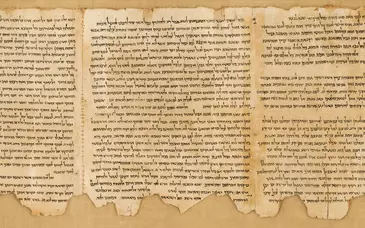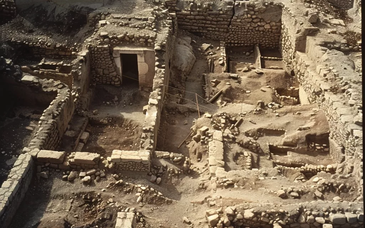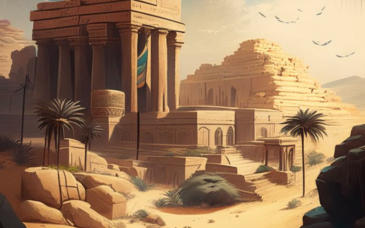
In part one of this series we established mankind has had knowledge of dinosaurs since the mid 1800’s or approximately 170 years. If it were possible to find drawings, carvings or other pictures of dinosaurs which could be dated prior to this time it could be conceived as proof that ancient man had knowledge of, or had personally seen a dinosaur. For some this is critical in their defense of a young earth theory. If it can be proved dinosaurs and man co-existed, then the time lines currently accepted by the scientific community would have to be completely re-evaluated and altered. Just as important to many young earth believers is the fact this type of evidence would destroy the theory of evolution. But does such evidence exist? Science says no, but there are others who present some very interesting, and in some cases, very convincing evidence which contradicts the currently accepted scientific theories.
In part one of this series we looked at figurines of dinosaurs. There were no doubts the figurines were in fact dinosaurs, but there was considerable doubt concerning the age of the figurines. In this article we will look at an item for which the date is well established and not in question. This case however does not concern figurines, but a drawing which seems to clearly show dinosaurs. The fact this drawing was made approximately 400 years before man was supposed to know anything about dinosaurs raises a number of questions.The General Facts: In 1478 a man by the name of Richard Bell was elected Bishop of the Carlisle Cathedral in northern England. He served the parish until 1495 when he retired. Bell passed away that same year at the age of 86 and was interned beneath the floor of the cathedral. Atop the tomb/grave was placed a number of brass decorations. Included in these was an image of Bishop Bell with the cathedral in the background. Also included were brass strips which gave Bell’s name and the date of his death. These gave the basic information you would find on any tombstone.
Around the outside of the depiction of Bell and the cathedral is a strip of brass just less than ten feet in length. On this strip is the various information about Bell and a prayer that he find eternal rest. Mixed among the words are drawings of a human face, the trinity and eighteen different animals. Fifteen of these animals are recognizable as modern day creatures, well known to modern man. These include three dogs, four fish, an eel, dolphin, bird, fox, pig, bear, bat and an aardvark. These are clearly drawn and there is little if any doubt as to what they represent. The other three images are a bit more controversial.
The Bell Dinosaurs - 350 Years To EarlyOne of the three creatures in question could be a dinosaur, but critics of this theory say it is meant to be a crocodile or alligator. While there are some characteristics of the drawing which do not match those of a crocodile or alligator, there are others which do not. The similarity is close enough that an argument could be made either way so it is inconclusive. The other two creatures, which appear together, are much harder to explain.
At first glance the two creatures clearly appear to be dinosaurs with elongated bodies, long tails, and long necks wrapped around one another. What the artists intended these to represent is unknown, but even critics are hard pressed to give an adequate explanation as to what these drawings are meant to represent. Any claims the drawings are abstract holds very little credibility when you look at the other drawings which leave no doubt as to what they are meant to be. If these are indeed drawings of dinosaurs, just how did the artist know what they looked like almost 300 years before any fossils were recovered or recognized as belonging to an extinct species? Supporters of the young earth theory believe the answer is man knew what dinosaurs looked like because they had seen them, lived with them. This evidence, with a well-established date, is difficult to explain and supports, to a point, the claims of co-existence.
Key Evidence supporting Authenticity: This is an unusual case as it provides us with a very definite time period in which the images were created. Unlike other similar claims when the creation date is vague or greatly in question, we know when Bishop Bell passed away and we know when the tomb was sealed. With the discovery, or realization, of dinosaurs coming in the early to mid 1800’s, the date of 1495 raises some serious questions. This information offers proof the images were created almost 350 years before anyone should have known what these animals looked like. The only question then remaining, are these in fact images of dinosaurs?
At first glance, and even after studying the images for a time, they definitely seem to be dinosaurs. It is difficult to image what other creature the artist could have been trying to draw if not a dinosaur. This would seem to indicate the artist had some knowledge of what dinosaurs looked like. Ruling out time travel and aide from an extraterrestrial being, the source of this knowledge remains a mystery.
Key Evidence against Authenticity: While the date offers intriguing possibilities, it is also the greatest stumbling block in my opinion. You may be able to convince me the time gap between dinosaurs and man is not as great as science currently believes. In fact, a recent discover found certain dinosaurs survived the great extinction and lived much longer than previously thought. This does not mean scientist believe dinosaurs remained on earth until man showed up, but the time span between the two species is not as great as once thought.
While I may be convinced the time gap is less than 65 million years, I cannot be convinced that an artist who lived in 1495 had seen an actual dinosaur. It stands to reason that had dinosaurs been alive in the middle ages, even back to the Bronze Age, there would be far more records of them. As it is, the potential evidence is scattered and highly debated. The idea that Christopher Columbus could have seen a living dinosaur is far more than I am willing to accept.Conclusions:On the surface this seems to make a strong case in favor of the idea that man and dinosaurs co-existed, at least for a time. While I cannot explain the images or how the artist knew to draw them, I cannot accept that someone in the 1400’s lived alongside a dinosaur. I also cannot venture an educated guess on what the images might be meant to be if not dinosaurs. – An interesting note, the church/cathedral in which the tomb is located does not support the dinosaur theory. They will not venture a guess as to what the images do depict, but they do not believe they are dinosaurs. The church wants nothing to do with these claims and is attempting to remain out of the argument entirely. In fact they have covered the tomb with carpet and you must obtain written permission, which is said to be an ordeal, in order to view the tomb. When all is said and done, the evidence is very interesting and compelling, I just cannot bring myself to accept it.



